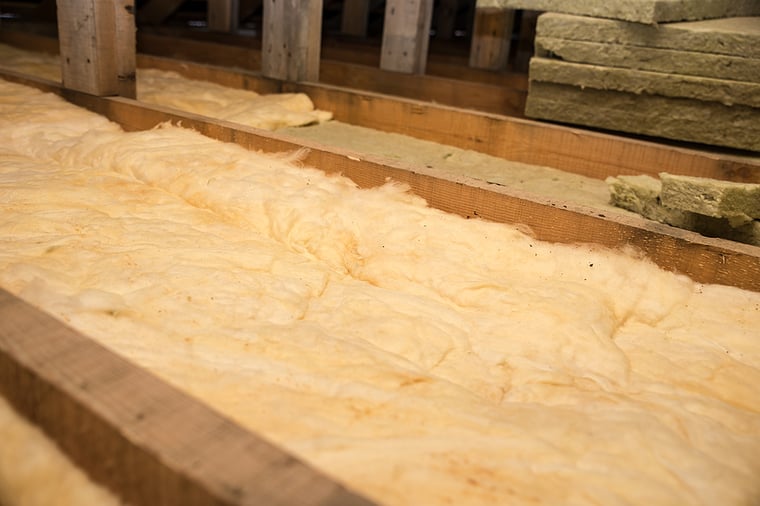
As a homeowner, it's advisable to perform a home insulation inspection at least twice a year. It helps you catch problems such as mold and mildew, which could indicate more concerning issues. It's more urgent if you've had roof repairs or a replacement in the past. The attic traditionally contains the bulk of insulation. However, it's also available in other parts of your home, such as between the walls and in crawl spaces.
Useful tips include knowing the various types of insulation, their importance, and potential problems. Having lived in the house for years, you can tell when things go wrong. That's because you know how your home feels when the HVAC unit operates at an optimum level.
Indicators of Faulty Insulation
The older your house is, the more likely it is to have insulation problems. This situation is attributable to normal wear and tear over the years, as well as outdated materials. A home insulation inspection will identify the problem and recommend a solution. Common indicators of faulty insulation are:
1. Higher Utility Bills than Usual
You might start noticing higher-than-average energy bills without installing new appliances or adjusting your HVAC settings. If your air conditioning runs more often, it could signal failing insulation. It means the system works longer to maintain optimum temperature. Pipes, light fixtures, ceiling fans, and outlets around the house are primary causes of air leaks.
2. Fluctuating Room Temperatures
Your entire insulation system won't fail at once. It will be a gradual process that will adversely affect specific parts of the house first. If one room feels uncomfortably hot while another is too cold, you need a home insulation inspection to discover the cause. An insulation expert can help you identify the issue and how to fix it. If you're fortunate, you'll only need new or additional insulation in some rooms instead of the whole house.
3. Cracks Around the House
Another indicator of worn or old insulation is unexpected drafts and breezes around the house. It means air gets in through undiscovered gaps. Sometimes, you can fix small cracks around your doors and windows by applying caulking to seal them. If you can't find the sources of the drafts, hire a qualified expert to do it. The longer they go unchecked, the larger these cracks become. The result is increasingly costly utility bills.
4. Damage in the Attic
A moist attic is arguably the clearest sign of a compromised insulation system. Schedule a home insulation inspection if you notice water marks on your ceiling or colder than usual winters. Your attic insulation should be at least six inches thick to provide vital protection against the elements.
While it rarely snows in Las Vegas, be on the lookout for ice dams on the coldest winter days. They might look pretty to some observers, but they could be a sign of problems with your insulation system.
Instead of heat escaping through vents, it rises to the rooftop and melts the snow, which drips towards the edge. The melted snow then freezes because the roof edge is colder, thereby forming icicles. Other than signaling leaking insulation, ice dams could also destroy your gutters and other parts of the roof.
5. Pest Invasion
Birds, snakes and rodents can do extensive damage to your overall roof structure. Your entire family could be exposed to health risks if they contaminate the insulation with their droppings and urine. This can cause mold, mildew, and rot in the attic and surrounding walls.
Pests also chew holes into the insulation and the roof. Other than water damage, it triggers increased utility bills. You also risk fire damage when rodents chew your electrical wiring. The only way to know the extent of the damage is to perform a home insulation inspection before hiring an expert fumigator.
6. Noisy environment
Most insulation systems also automatically act as soundproof solutions. Fiberglass, cellulose and foam are excellent materials for absorbing vibrations between adjacent rooms. Sealing cracks and the walls reduce both outside noises such as traffic and inside noises, such as footsteps. If they suddenly start sounding louder, it could mean your insulation is losing its effectiveness.
Most modern homes have state-of-the-art insulation systems. If you live in an older one, you might have to plan for an upgrade. It might cost you a pretty penny, but you’ll reap the benefits of long-term utility cost savings and improved comfort.
When Should You Schedule an Insulation Inspection?
Although we recommend a home insulation inspection every six months, you should schedule one whenever you feel the need. The aftermath of a big storm could prompt one to ensure that everything is fine. Your roof is supposed to provide durable shelter for at least two decades. However, it can last longer with regular, professional maintenance. Your roofing contractor should follow this inspection checklist:
- Understand Your Roof Profile
The roof inspection starts from the ground when we check its slope and lines to ensure they conform to the design. A sturdy roof shows uniformity without any signs of warping.
- Examine Roofing Materials
After ensuring your roofline is in good shape, the next step is to check for weak spots. Each type of material is susceptible to some damage. Metal tends to have dents, while asphalt shingles can crack, warp, or have bare patches. Depending on the extent of harm, we can either advise you to do repairs or install a new roof.
- Inspect the Flashing
Although the flashing covers a small part of your roof, it has implications for the insulation. The space around your chimney, skylights, and other protrusions must always remain tightly sealed. Cracks, rust, and warps are a sign of damage that can cost you if left unrepaired.
- Scrutinize the Gutters
If your house has bent gutters, water from the roof will flow onto the siding and encourage leaks and mold. Once done with the outside, your roof inspector should also conduct a thorough evaluation of the inside. An inspection of the ventilation and attic insulation involves looking for signs of pests, water damage, and holes. Confirm that the wood and the attic don't look warped.
Although it's one of the warmest parts of the house, moisture can still cause structural damage. Look for signs of mold, rot, or general deterioration. If they're present, you must plan for repairs as soon as possible to avoid health problems.
A comprehensive inspection of the roof's exterior and the interior shows whether its installation was proper. It also provides a fair estimate of its remaining lifespan so you can plan for a roof replacement in the future. Your home insulation inspection should ideally identify these problems early to avoid spending a fortune on repairs.
Schedule Your Home Insulation Inspection Today
First Quality Roofing & Insulation is your go-to contractor for all Las Vegas roofing needs. We install new roofs, conduct repairs and perform high-quality roof replacements. We also understand how crucial insulation is to your home's overall integrity.
Our team is renowned for its expertise in insulation. We catch and resolve small problems before they snowball into costly disasters. Contact us at 702-262-7847 to schedule your home insulation inspection today.
















